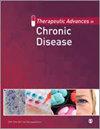Real-world non-interventional post-authorization safety study of long-term use of burosumab in children and adolescents with X-linked hypophosphatemia: first interim analysis
IF 3.3
3区 医学
Q2 PHARMACOLOGY & PHARMACY
引用次数: 0
Abstract
Background:X-linked hypophosphatemia (XLH) is a rare, progressive disorder characterized by excess fibroblast growth factor 23 (FGF23), causing renal phosphate-wasting and impaired active vitamin D synthesis. Burosumab is a recombinant human monoclonal antibody that inhibits FGF23, restoring patient serum phosphate levels. Safety data on long-term burosumab treatment are currently limited.Objectives:This post-authorization safety study (PASS) aims to monitor long-term safety outcomes in children and adolescents (1–17 years) treated with burosumab for XLH. This first interim analysis reports the initial PASS safety outcomes.Design:A 10-year retrospective and prospective cohort study.Methods:This PASS utilizes International XLH Registry (NCT03193476) data, which includes standard diagnostic and monitoring practice data at participating European centers.Results:At data cut-off (13 May 2021), 647 participants were included in the International XLH Registry; 367 were receiving burosumab, of which 67 provided consent to be included in the PASS. Mean (SD) follow-up time was 2.2 (1.0) years. Mean (SD) age was 7.3 (4.3) years (range 1.0–17.5 years). Mean duration of burosumab exposure was 29.7 (25.0) months. Overall, 25/67 participants (37.3%) experienced ⩾1 adverse event (AE) during follow-up; 83 AEs were reported. There were no deaths, no AEs leading to treatment withdrawal, nor serious AEs related to treatment. The most frequently reported AEs were classified as ‘musculoskeletal and connective tissue disorders’, with ‘pain in extremity’ most frequently reported, followed by ‘infections and infestations’, with ‘tooth abscess’ the most frequently reported.Conclusion:In this first interim analysis of the PASS, covering the initial 2 years of data collection, the safety profile of burosumab is consistent with previously reported safety data. The PASS will provide long-term safety data over its 10-year duration for healthcare providers and participants with XLH that contribute to improvements in the knowledge of burosumab safety.Trial registration:European Union electronic Register of Post-Authorisation Studies: EUPAS32190.在患有X连锁低磷血症的儿童和青少年中长期使用布罗苏单抗的真实世界非干预性授权后安全性研究:首次中期分析
背景:X-连锁低磷血症(XLH)是一种罕见的进行性疾病,其特征是成纤维细胞生长因子23(FGF23)过多,导致肾磷酸盐消耗和活性维生素D合成受损。布罗苏单抗是一种重组人单克隆抗体,可抑制 FGF23,恢复患者的血清磷酸盐水平。目标:这项授权后安全性研究(PASS)旨在监测布罗苏单抗治疗XLH的儿童和青少年(1-17岁)的长期安全性结果。结果:在数据截止日(2021年5月13日),国际XLH注册中心共纳入647名参与者;367人正在接受布罗苏单抗治疗,其中67人同意纳入PASS。平均(标清)随访时间为 2.2(1.0)年。平均(标清)年龄为 7.3(4.3)岁(范围为 1.0-17.5 岁)。布罗苏单抗的平均暴露时间为 29.7 (25.0) 个月。总体而言,25/67 名参与者(37.3%)在随访期间经历了⩾1 次不良事件 (AE);共报告了 83 次不良事件。没有死亡病例,没有导致停药的不良反应,也没有与治疗相关的严重不良反应。最常报告的不良事件被归类为 "肌肉骨骼和结缔组织疾病",其中 "四肢疼痛 "最常报告,其次是 "感染和侵袭",其中 "牙齿脓肿 "最常报告。PASS将为医疗服务提供者和XLH患者提供为期10年的长期安全性数据,有助于提高对布罗单抗安全性的认识:试验注册:欧盟授权后研究电子注册:EUPAS32190。
本文章由计算机程序翻译,如有差异,请以英文原文为准。
求助全文
约1分钟内获得全文
求助全文
来源期刊

Therapeutic Advances in Chronic Disease
Medicine-Medicine (miscellaneous)
CiteScore
6.20
自引率
0.00%
发文量
108
审稿时长
12 weeks
期刊介绍:
Therapeutic Advances in Chronic Disease publishes the highest quality peer-reviewed research, reviews and scholarly comment in the drug treatment of all chronic diseases. The journal has a strong clinical and pharmacological focus and is aimed at clinicians and researchers involved in the medical treatment of chronic disease, providing a forum in print and online for publishing the highest quality articles in this area.
 求助内容:
求助内容: 应助结果提醒方式:
应助结果提醒方式:


